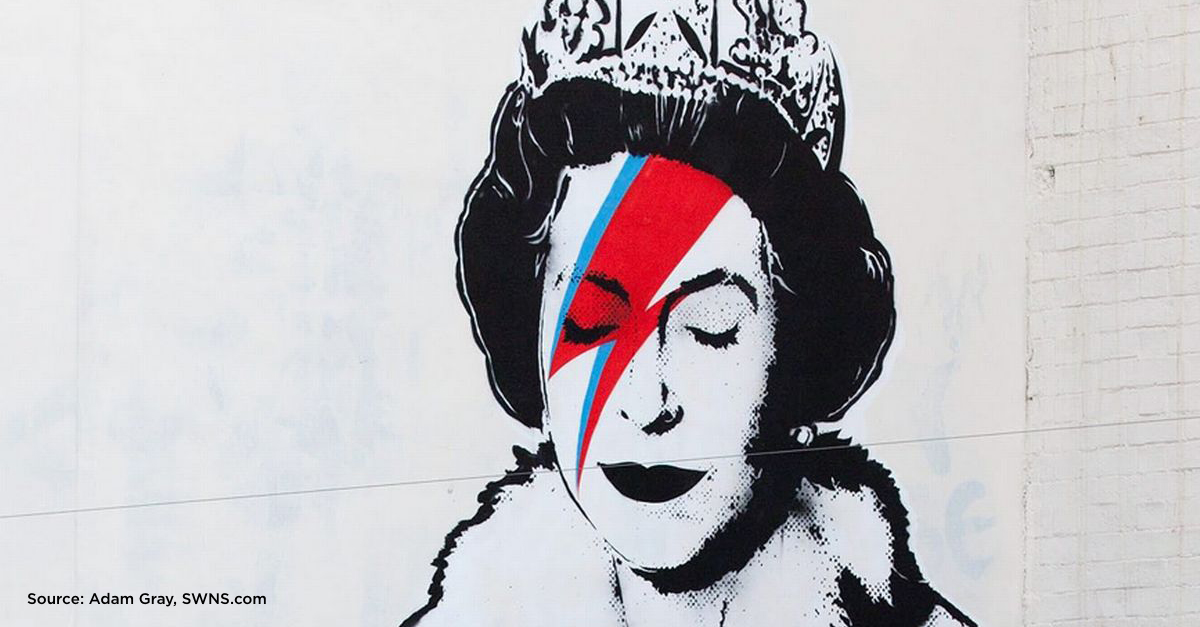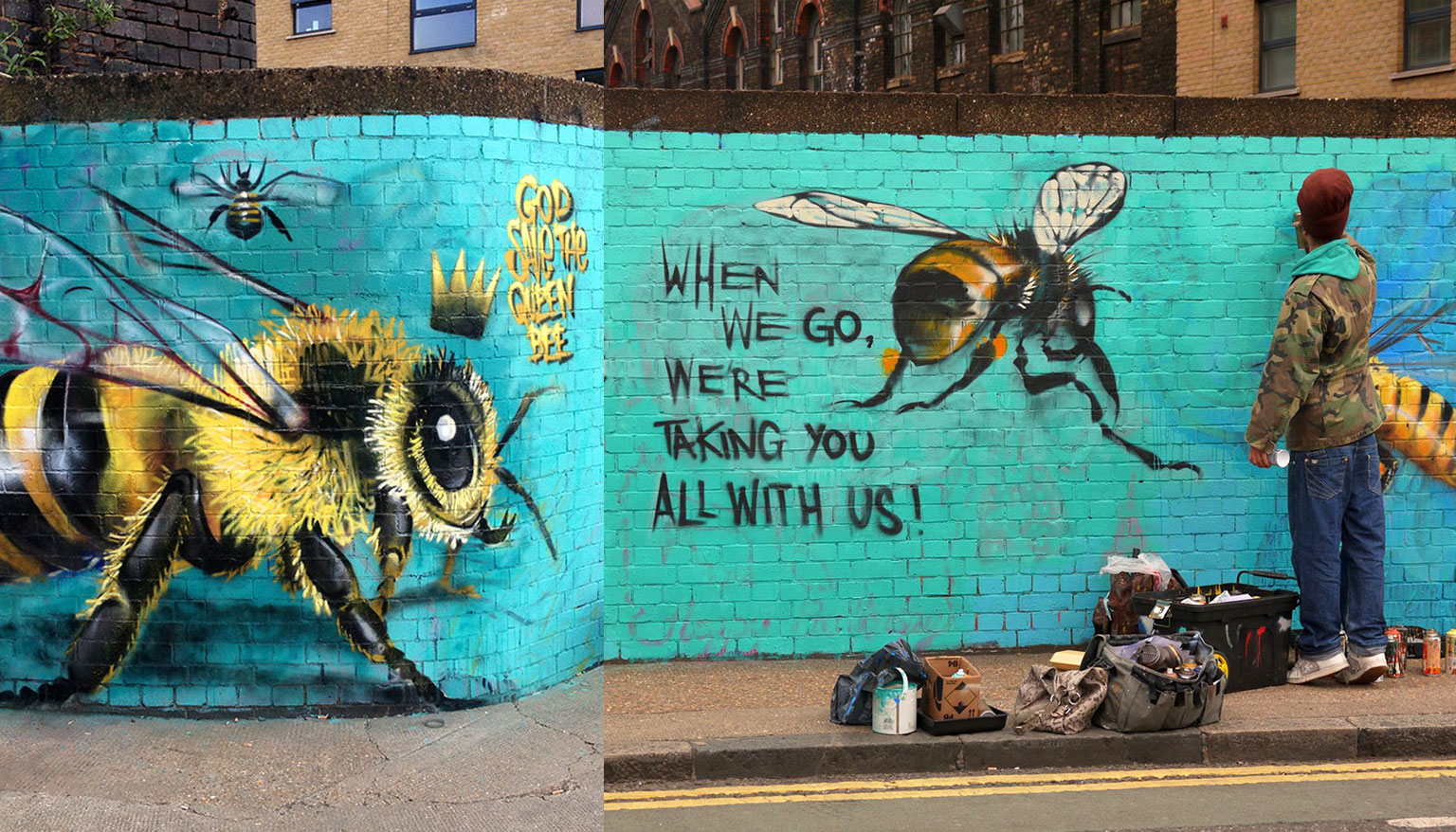The art of activism

Creatives get inspired by all sorts of things, and strolling the streets can be one of them. A walk around any of our major cities can be likened to visiting a free art gallery, with larger-than-life urban canvases around every corner. And sometimes, they speak to us.
In our industry we strive to create – our creations are sent into the world to grab people’s attention and market a product or service. When art meets activism it takes things to a whole other level, by commenting on, or raising awareness of political, social or environmental issues – to create change.
And they don’t come more influential, controversial and collectible than creator of political and social activist art – Banksy. This Bristol-based graffiti artist is an enigma, a smart move when the very act of creation can be a criminal offence. He’s been labelled both a genius and a vandal, with his work popping up everywhere from London to Bethlehem, and often changing hands for hundreds of thousands of pounds. His art is a social commentary on everything from child labour, Covid and climate crisis to the Israel-Palestine conflict and British imperialism.
Banksy’s portrayals of Queen Victoria, Elizabeth II and Lady Di make it no secret that the art world’s resident agitator is not the royal family’s biggest fan.
www.myartbroker.com
Just in time for the Jubilee, new artwork has appeared in Bristol that is rumoured to be a Banksy. The artist’s take on David Bowie’s iconic Aladdin Sane album cover features a portrait of Queen Elizabeth II with a red lightening bolt across her face. Banksy may well be making an anti-royal statement about the madness of monarchy, but as always, art is open to interpretation.
A royalist, who views the Queen as a symbol of stoicism and restraint, might see the Queen’s dismay at the insanity of modern British morality, politics and culture.
Whatever you make of the ‘Jubilee Queen’, it resonates. By making your brain work a bit, it stays with you longer.
Art’s value often lies in providing us perspective and new ways to envision our world.
The Centre For Artistic Activism
For sheer aesthetic appeal and longevity I love large-scale street art like Banksy’s, but when it promotes causes close to my heart, I’m one of it’s biggest fans. Luckily there is a thriving street art scene in the UK and my all time favourites are also passive environmentalists.
Creative conservation
Activist art is bold and grabs your attention with both hands, it makes you feel something emotionally, and it plants a seed that grows like a weed until its taken over and you’re compelled to act. This makes it an extremely effective form of creative conservation.
Tiffany Francis is an author and illustrator who is a big believer in creative conservation, and says, ‘Seeing images of how things have pretty much returned to earth-ravaging normality in many parts of the post-Covid world has left me feeling bleak on so many levels…’
…we as creatives can contribute to the environmental movement.
Tiffany Francis
Louis Masai is a street artist who has spent three years sprucing up walls across the world to highlight the plight facing creatures under threat. He’s on a one-man mission to raise awareness of the plight of the humble honey bee through his Art of Beeing mural project, and he’s painted swarms of bees on urban walls in London and Devon to raise awareness of colony collapse disorder. Sparrows also received his super-size treatment, to help promote The RSPB’s Big Garden Birdwatch.

Driving change with a call to action
Another thing I admire about Louis’ work, is that he helps people to act, by incorporating inspiring copy and hashtags into his designs, which many passive environmentalist street artists forget to do. It’s something I feel passionately about, because this small omission can make a huge difference to engagement.
In advertising we understand the importance of a ‘call to action’. It usually involves expressively asking the reader to do something, helped by the inclusion of a phone number, URL, hashtag, QR code or logo.
After all, an image may make someone stop and think, but they need to know how to engage with your cause or find more information if you want them to help make a difference.
Creating work with a purpose is edifying, but if we want to inspire action we need to do more than make people think. We need to help them to get involved.
My own first encounter with large-scale street art supporting species under threat was the fabulous ‘Jewel of York’, painted by one of the best known environmental street artists in the country, ATM. He was an obvious choice because his core aim has always been to raise awareness of local species, particularly those that may be in danger.

The beetle mural was commissioned by environmental charity New Networks for Nature and made possible by crowd-funding. Seeing the creature crawling up the side a residential house made a big impression on me, however, most people have probably never heard of a tansy beetle, which is why it saddened me to see the lack of a hashtag where they could learn more.
82.9% of us live in towns and cities, so there is often a disconnect from nature, if we are unaware a species exists, we are unlikely to know or care when we start losing them at an alarming rate. I applaud ATM’s work for ‘bringing back’ species to areas they once inhabited, and for his work’s sheer beauty and realism – especially his depictions of birds, that are now either extremely rare or longer exist in the UK.

These street artists also happen to be passionate about wildlife: #faunagraphic (top) and #ironyandboestreetart (bottom).


Extinction Rebellion also turned to street art to highlight the ‘sixth extinction,’ and their murals appeared just before the April 2019 protests. The vibrant creation below is by Jane Mutiny, and depicts the dangers of species loss, with animals already extinct in the centre and endangered species to the left. It also offers a spark of hope, as species on the right were thought to be extinct but are now making a comeback.

Anyone raising awareness of the natural world in community settings is also bringing accessible art to the next generation, so that has to be a good thing. But will people understand the message? If not, they are unlikely to put their hands in their pockets and support the charities that make change possible. Extinction rebellion’s murals do feature their name tag and logo – but we need to remember that creative conservation should also enable conversation, otherwise the creators are at risk of preaching to the converted.
Guerrilla marketing
Whether you view street art as graffiti or graphic art – it is often guerrilla marketing at its most raw and potent.
The first rule of guerrilla warfare is to know the terrain and use it to your advantage.
The term ‘guerrilla marketing’ was inspired by ‘guerrilla warfare’ which was unconventional warfare using different techniques such as the small tactic strategies used by armed civilians.
Not all guerrilla marketing involves youths armed with spray-paint canisters. It can take the form of projection advertising, yarn bombs, or flash mobs; but it always uses the environment to surprise the consumer and create drama, while promoting a product or service.
https://www.youtube.com/watch?v=IqCKIcWBubQ
When guerrilla marketing aims to inspire actions aren’t selfish or covetous – but are for the social or environmental good, it is also a form activist art. It can make a difference to the world, without costing the earth.
Guerrilla marketing can be a cost effective solution to gain wide exposure for smaller businesses and enable large corporates to improve marketing ROI through targeted location bias. It simply requires a different perspective, disruptive creativity and time.
If you have a cause you’d like help promoting with a little extra creativity and energy, we can help – get in touch with us today.
Want to read more? You might find these articles interesting:
Great design is simple
The psychology of colour in branding
3D Zebra Crossings